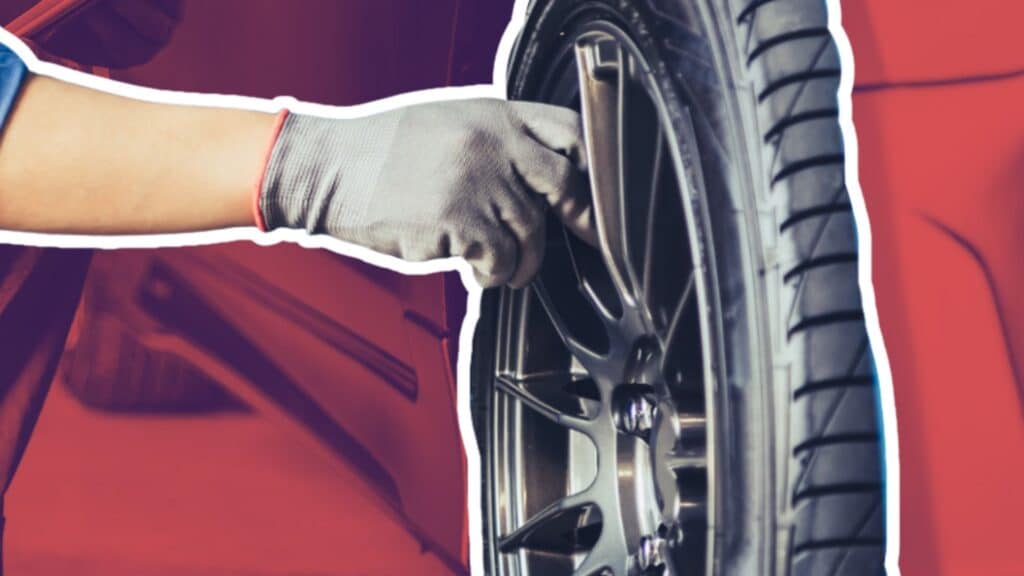Tire rotation is a key part of car care that many drivers overlook. You might wonder, “How much is a tire rotation?”
While costs vary, they typically range from $20 to $50 at a shop. But what if you could do it yourself and save that money?
Many car owners feel unsure about tackling this task, fearing it’s too complex or time-consuming.
Don’t worry – with the right tools and know-how, you can rotate your tires at home safely and effectively.
This guide will walk you through the process of DIY tire rotation, helping you save money and extend the life of your tires.
You’ll learn the steps, tools needed, and tips to make the job easier. By the end, you’ll be ready to confidently take on this important maintenance task.
Importance of Tire Rotation
Rotating your tires regularly is more than just a good habit – it’s a key part of car care. Let’s look at why it matters.
- Promotes Even Tire Wear: Not every tire wears the same way. The front tires often wear faster due to braking and steering. By moving tires to different spots, you help them wear more evenly. This can make your tires last longer, saving you money in the long run.
- Maintains Handling and Safety: Uneven tire wear can cause your car to pull to one side or handle poorly. This can be unsafe, especially in bad weather. Regular rotation keeps your tires in good shape, which helps your car drive smoothly and safely.
- Improves Fuel Efficiency: When your tires are evenly worn, your car runs more efficiently. This means you’ll use less gas, which is good for your wallet and the environment.
Tools and Equipment Needed
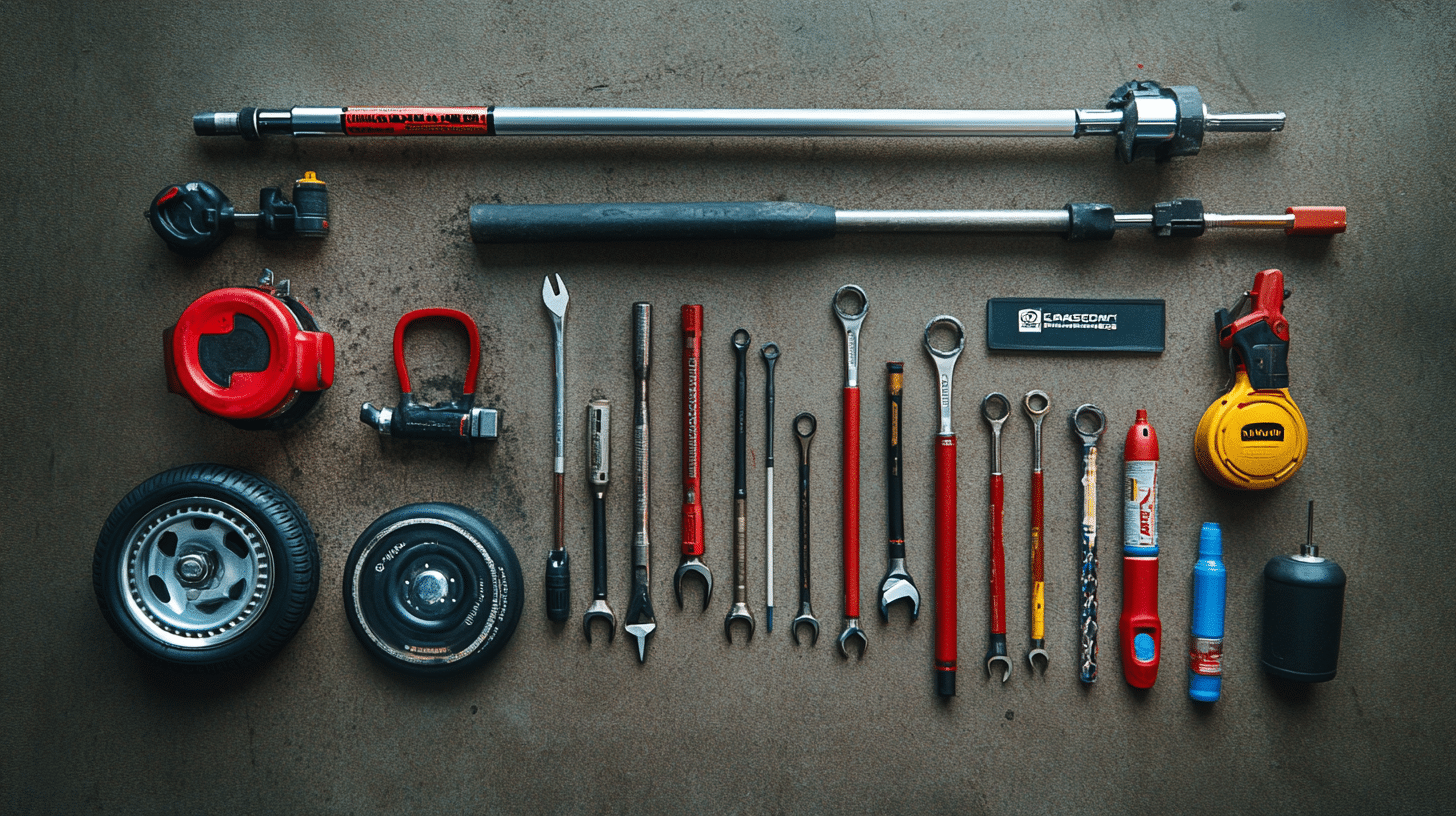
Before rotating your tires, ensure you have the right tools. Having the proper equipment will make the job safer and easier. Here’s what you’ll need:
1. Car jack and jack stands are essential for safely lifting your car. Never work under a car supported only by a jack.
2. Lug wrench or impact wrench: You’ll use this to remove and tighten the lug nuts on your wheels.
3. Torque wrench: This tool helps you tighten the lug nuts to the right level, which is important for safety.
4. Tire pressure gauge: Check your tire pressure before and after rotation to ensure proper inflation.
5. Tire marker or crayon: Use this to mark your tires so you know where to move them.
6. Wheel chocks keep your car from rolling while you work.
Having these tools on hand can save you money. You can do it yourself instead of asking, “How much is a tire rotation?” at a shop.
The initial cost of tools might seem high, but they pay for themselves over time with DIY maintenance.
Step-by-Step Guide to Tire Rotation

Ready to rotate your tires? Follow these steps to do it safely and correctly. This guide breaks down the process into easy-to-follow steps, from preparing your vehicle to the final checks.
Remember, take your time and prioritize safety throughout the process.
1. Prepare Your Vehicle
Park your car on a flat, level surface. Turn on the parking brake to keep your car steady. For extra safety, put wheel chocks behind the tires that will stay on the ground.
2. Loosen the Lug Nuts
Before lifting the car, use a lug wrench to loosen the lug nuts slightly. Don’t take them off completely – break them loose.
3. Lift the Vehicle
Use a car jack to lift your vehicle. Check your owner’s manual to find the right spots to place the jack.
Once the car is up, put jack stands under it for safety. Never work under a car held up only by a jack.
4. Remove the Wheels
Take off the lug nuts and remove the wheels. As you do this, mark each tire to remember where it started. This helps you put them in the right new spots later.
5. Rotate the Tires
Move the tires based on your car type and tire type. For non-directional tires on a front-wheel drive car, move the rear tires straight back to the front and the front tires.
For rear-wheel or all-wheel drive, move the front tires to the back and the rear tires cross to the front. Swap the front and rear tires on the same side if you have directional tires.
6. Reinstall the Wheels
Put the wheels back on in their new spots. Hand-tighten the lug nuts in a criss-cross pattern.
7. Lower the Vehicle
Carefully lower your car and remove the jack stands.
8. Tighten the Lug Nuts
Use a torque wrench to tighten the lug nuts fully. Check your car’s manual for the right tightness level.
9. Final Checks
Check the tire pressure in all tires and add air if needed. Take a short test drive to make sure everything feels right.
By doing this yourself, you save money on shop costs. The question “how much is a tire rotation?” becomes less important when you can do it at home.
Plus, you’re taking good care of your car and learning a useful skill.
Different Tire Rotation Patterns
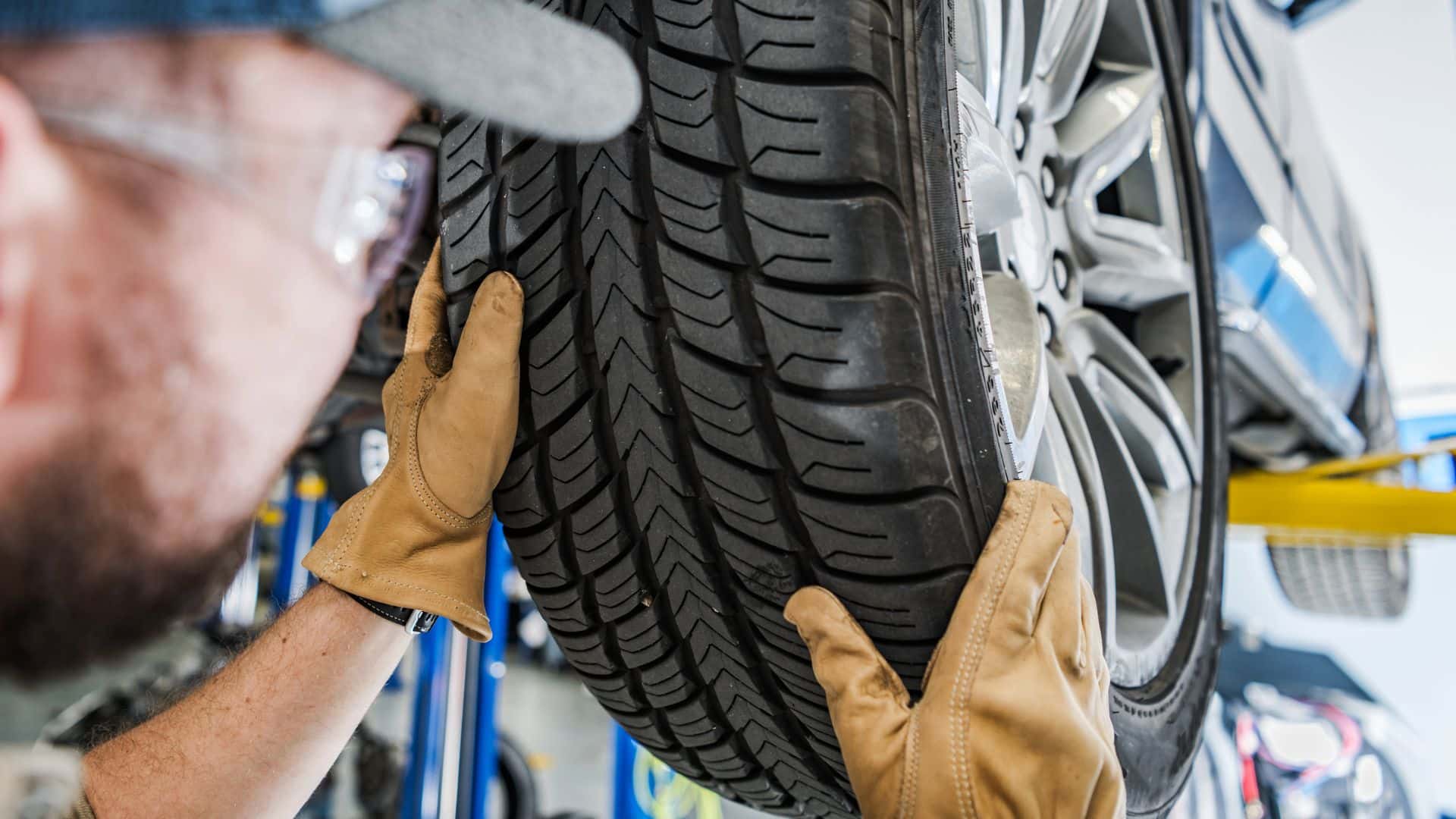
Knowing your car’s right tire rotation pattern is key to even wear and longer tire life. Here are three common patterns:
1. Front-to-Back
This is the simplest pattern. The front tires move straight back to the rear, and the rear tires move straight forward to the front. It’s often used for cars with different-sized front and rear tires.
2. X-Pattern
In this pattern, tires move diagonally. The front right tire goes to the left rear, and the front left tire goes to the right rear.
The rear tires also switch sides as they move to the front. This pattern is good for many cars, especially those with all-wheel drive.
3. Side-to-Side
This pattern is for cars with non-directional tires of the same size. The front tires move to the opposite rear positions, while the rear tires move to the opposite front positions. It helps balance out uneven wear caused by turns and road crowns.
Choosing the right pattern depends on your car type and tire type. When you rotate your tires at home, you’re not just saving on the cost of a tire rotation at a shop.
You also ensure your tires wear evenly, saving you money in the long run.
Tips and Precautions
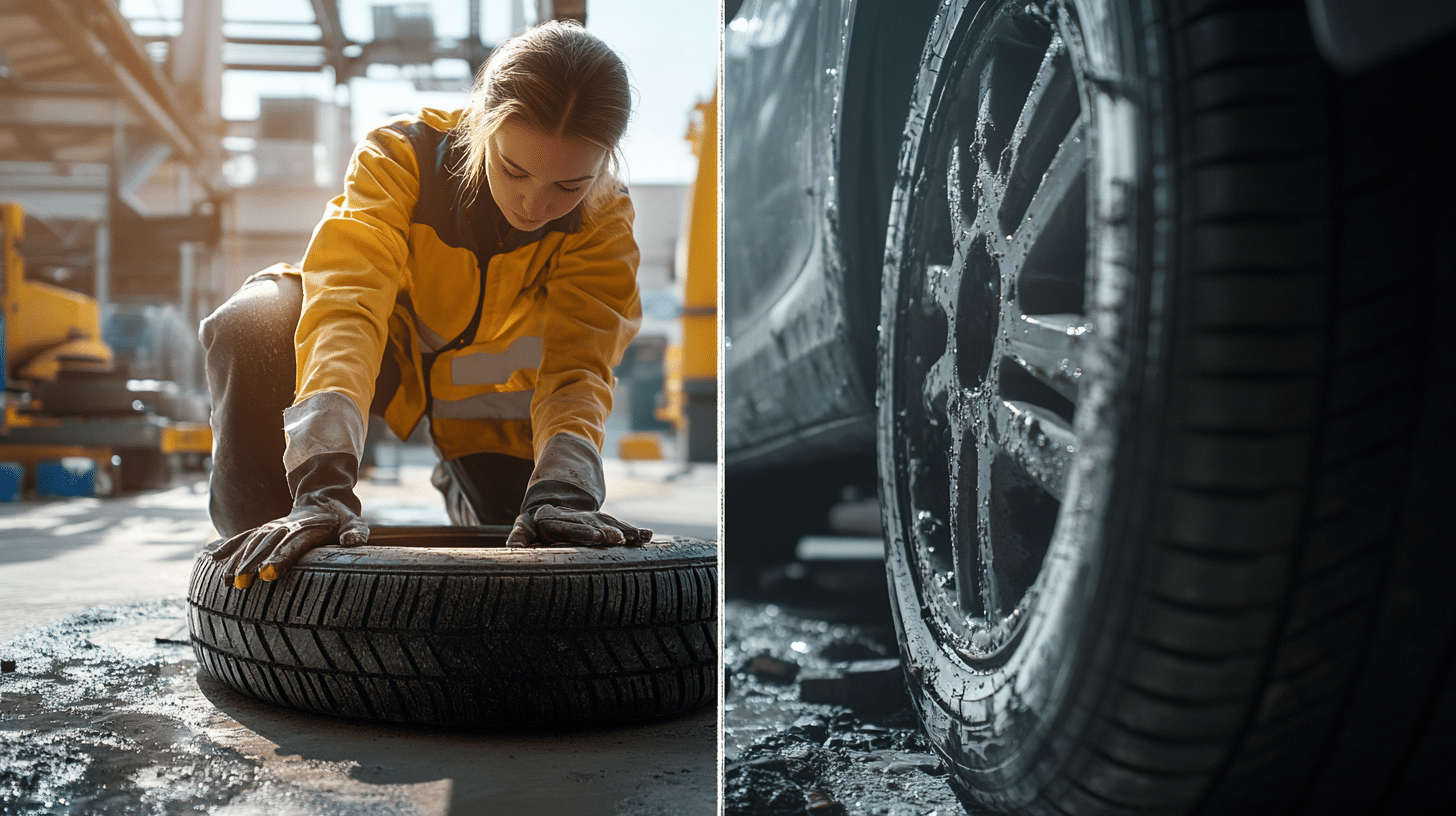
Before you start rotating your tires, remember these important points. These tips will help you work safely and get the best results.
They cover everything from using your car’s manual to inspecting your tires and tools. Following these guidelines will make your DIY tire rotation smoother and more effective.
1. Check Your Manual
Always look at your car’s manual first. It gives you specific instructions for your car model and tells you how tight to make the lug nuts. This is very important for safety.
2. Look at Your Tires
While you’re rotating your tires, take a close look at each one. Check for any damage, like cuts or bulges.
Also, see if they’re wearing evenly. If you spot any issues, you might need to replace a tire or check your car.
3. Use Good Tools
Make sure all your tools are in good shape. A broken tool can lead to injury or damage to your car.
Learn how to use each tool correctly. If unsure, ask someone who knows or watches some how-to videos.
Cost and Frequency of Tire Rotations
Understanding how often to rotate your tires and the costs involved can help you plan your car care better.
Cost of Tire Rotation
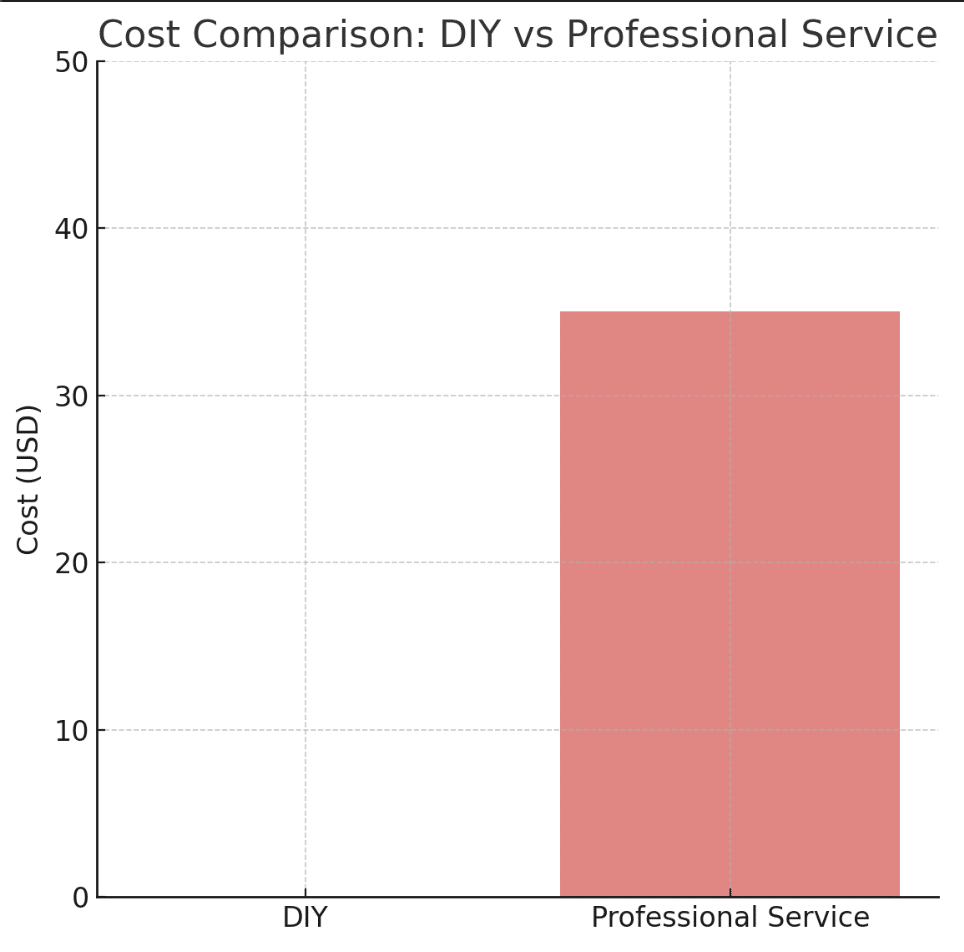
X-Axis = DIY and Professional Service
Y-Axis = Cost (US$)
If you’re asking, “How much is a tire rotation?” The answer depends on whether you do it yourself or have a pro do it.
DIY Rotation: You can rotate your tires for free with the right tools. You’ll need to buy tools initially, but they’ll pay for themselves over time.
Professional Service: If you take your car to a shop, tire rotation usually costs between $20 and $50. Some places might do it for free if you bought your tires there.
How Often to Rotate Tires
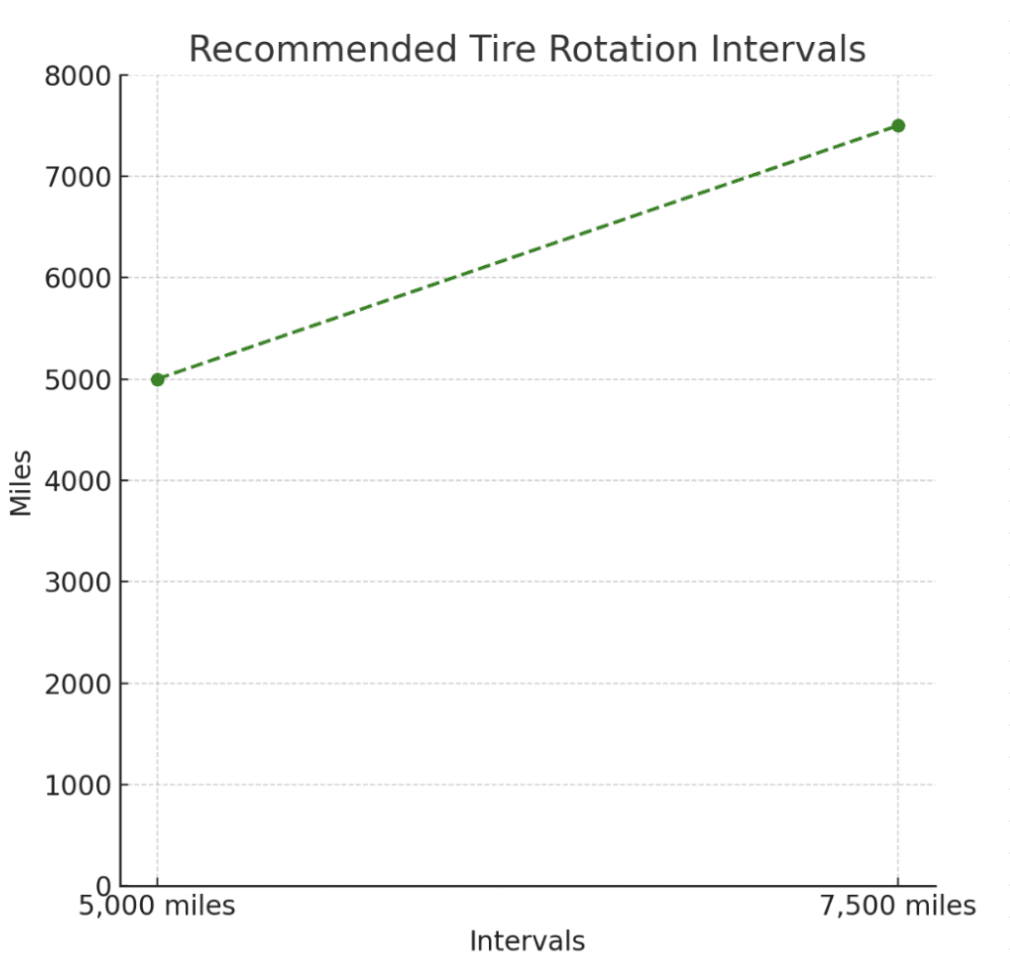
X-Axis = Intervals
Y-Axis = Miles
Most car experts recommend rotating your tires every 5,000 to 7,500 miles, which can vary depending on your car type and driving habits.
Check your car’s manual. It will tell you how often to rotate your tires for your car model. Some cars might need it more often, while others can go longer between rotations.
By rotating your tires regularly, whether at home or a shop, you help them last longer. This saves you money in the long run by reducing the need to buy new tires.
Conclusion
Rotating your tires is a simple yet crucial task for maintaining your vehicle. Whether you do it yourself or have it done professionally, regular rotations can save you money and keep you safer on the road.
If you’ve been wondering, “How much is a tire rotation?” The answer can range from free (if you do it yourself) to around $20-$50 at a shop.
But the real value lies in the extended life of your tires and improved vehicle performance.
By following the steps and tips outlined in this guide, you can confidently tackle this maintenance task at home.
Consider your vehicle’s manual for specific recommendations and prioritize safety. Rotate your tires regularly to enjoy a smoother, more efficient ride.
Frequently Asked Questions
Can You DIY Rotate Tires?
With the right tools and knowledge, you can rotate tires at home. You’ll need a jack, jack stands, a lug wrench, and a torque wrench.
Always follow your car’s manual for specific instructions and safety tips.
How Can I Prolong the Life of My Tires?
Rotate tires regularly, keep them properly inflated, and align your wheels. Avoid quick starts, hard braking, and overloading your vehicle. Check tire pressure monthly and inspect for wear or damage.
How Often Should You Rotate Your Tires?
Most experts recommend rotating tires every 5,000 to 7,500 miles. Check your car’s manual for specific recommendations.
Some cars may need more frequent rotations based on driving habits and tire wear.


